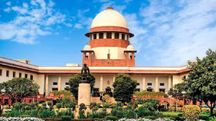India had its prime meridian before Greenwich, new textbook reveals
The latest Class-6 NCERT social science textbook introduces India's ancient prime meridian, 'madhya rekha,' through Ujjain. The revised curriculum also brings significant changes, merging history, geography, and civics, while omitting certain historical references.
 India had its own prime meridian before Greenwich, new textbook reveals
India had its own prime meridian before Greenwich, new textbook revealsA recently published Class-6 NCERT social science textbook has unveiled intriguing historical information about India's prime meridian. Known as "madhya rekha" or "middle line," this ancient reference point passed through Ujjain, Madhya Pradesh, long before the establishment of the Greenwich Meridian.
The textbook, titled "Exploring Society India and Beyond," highlights the astronomical significance of Ujjain. It mentions Varahamihira, a renowned astronomer who worked in the city approximately 1,500 years ago. The text emphasises that Indian astronomers were well-versed in concepts of latitude and longitude, including the necessity of a prime meridian.
The new curriculum introduces several changes in content and terminology. The Harappan civilization is now referred to as the "Sindhu-Sarasvati" civilization, with increased emphasis on the Sarasvati river basin. The textbook describes this river, currently known as Ghaggar in India and Hakra in Pakistan, as a significant feature of the ancient landscape.
The revised textbook also modifies its approach to discussing social structures in ancient India. While it mentions various professions from Vedic texts, it omits previous references to the caste system and restrictions on women and Shudras studying the Vedas.
This new edition represents a significant restructuring of the NCERT's social science curriculum. It combines elements of history, geography, and civics into a single volume, focusing on what NCERT Director Dinesh Saklani calls "big ideas."
The consolidation has led to the removal of several chapters detailing ancient Indian kingdoms, including those of Ashoka and Chandragupta Maurya. References to cultural landmarks such as the Sanchi Stupa and Ajanta cave paintings have also been omitted.
Copyright©2025 Living Media India Limited. For reprint rights: Syndications Today









